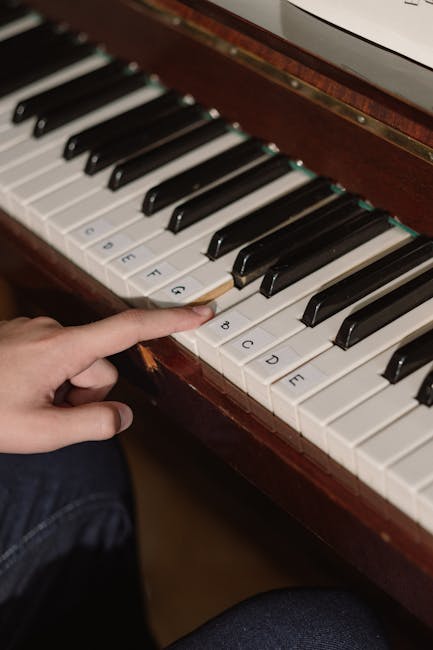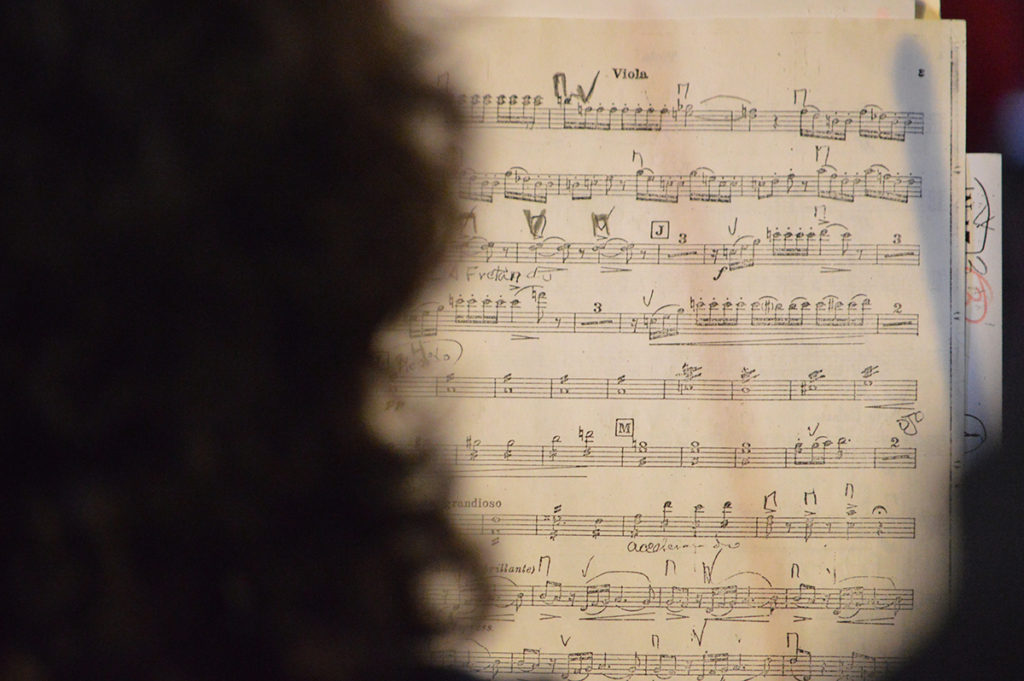Have you ever looked at a guitar chord chart and felt like you were trying to decipher an ancient mystical language? Fear not, fellow guitarists! In this article, we will embark on a whimsical journey through the vast and bewildering world of complex guitar chords. Grab your guitar, your sense of humor, and let’s unravel the code together! Fundamentals of Guitar Chord Structure“>
Fundamentals of Guitar Chord Structure“>
Contents
- 1 Understanding the Fundamentals of Guitar Chord Structure
- 2 Exploring the Anatomy of Complex Chords
- 3 Deciphering Chord Extensions and Alterations
- 4 Techniques for Mastering Chord Inversions on the Guitar
- 5 Applying Music Theory to Navigate Through Advanced Chords
- 6 Practical Exercises for Integrating Complex Chords into Your Playing
- 7 Developing a Strategic Practice Routine for Long-Term Mastery
- 8 FAQs
- 9 Keep on strumming those mysterious chords!
Understanding the Fundamentals of Guitar Chord Structure
So, you’ve decided to pick up a guitar and start strumming away like a true rockstar, huh? Well, before you can start shredding like Hendrix, you need to understand the fundamentals of guitar chord structure. And let me tell you, it’s not as easy as it looks!
First things first, let’s talk about what makes up a chord. A chord is made up of three or more notes played together that create harmony. These notes are usually derived from a scale and are played simultaneously to create that signature guitar sound.
Now, here comes the tricky part – chord structure. Each chord is made up of different intervals between notes, which determine the quality and sound of the chord. There are different types of chords, such as major, minor, diminished, and augmented, each with its own unique interval structure.
But don’t worry, mastering guitar chord structure is like solving a puzzle - once you figure out the pieces, the rest falls into place. So grab your guitar, practice those chord progressions, and soon enough, you’ll be playing like a pro. Rock on, my friend!
Exploring the Anatomy of Complex Chords
Have you ever looked at a complex chord and thought, “What in the world is going on here?” Well, fear not, fellow musicians, because we’re about to dive deep into the intricate world of complex chords.
Picture this: you’re playing a C7#9#11 chord on your guitar and suddenly realize you have no clue what all those numbers and symbols mean. Fear not, for we are here to break it down for you. Let’s start by dissecting this beast of a chord:
- The C signifies the root note of the chord, the foundation on which everything else is built.
- The 7 tells us that the chord includes a dominant 7th interval, adding some tension and color to the sound.
- The #9 adds an extra zing by including a raised 9th note in the chord, giving it a jazzy feel.
- The #11 takes things up a notch by including a raised 11th note, adding even more dissonance and complexity to the chord.
Now, put all those elements together, and you’ve got yourself a spicy C7#9#11 chord that will knock your socks off (or at least make your fingers do some acrobatics on the fretboard). So next time you come across a complex chord, don’t panic – just remember that behind all those numbers and symbols lies a world of musical magic waiting to be explored!

Deciphering Chord Extensions and Alterations
So you’ve mastered your basic chords and are ready to take your guitar playing to the next level by diving into the world of chord extensions and alterations. But wait – what are these fancy-sounding terms all about?
Think of chord extensions as the cool accessories that you can add to your basic chords to jazz them up and give them some extra flavor. These extensions go beyond just the usual triads and include notes like ninths, elevenths, and thirteenths. It’s like adding sprinkles to your ice cream – sure, the ice cream is delicious on its own, but those sprinkles take it to a whole new level of awesomeness.
Now, let’s talk about chord alterations. This is where things get really wild and funky. Alterations involve changing certain notes within a chord to give it a unique and unexpected sound. You can sharpen or flatten notes, add tensions, or even completely swap out notes altogether. It’s like giving your boring old chord a makeover and turning it into a rockstar.
So, the next time you pick up your guitar, don’t just settle for the same old chords you’ve been playing for years. Experiment with chord extensions and alterations, get creative, and see where your musical journey takes you. Who knows, you might just stumble upon a chord progression that blows everyone’s minds and cements your place as a guitar hero in the making.

Techniques for Mastering Chord Inversions on the Guitar
So you want to master chord inversions on the guitar, huh? Well, grab your pick and get ready to rock because I’ve got some killer techniques that will have you shredding like a pro in no time!
First things first, let’s talk about finger positioning. When it comes to chord inversions, having the right finger placement is key. Make sure your fingers are on their tip-toes, just like they’re trying to impress that cute barista at your local coffee shop. Trust me, it makes all the difference!
Next up, practice those smooth transitions between inversions. Think of it like a dance floor – you want to glide from one chord to the next seamlessly, without any awkward shuffling or stumbling. Your fingers should be as graceful as a ballerina, moving effortlessly across the fretboard.
And finally, don’t forget to experiment with different voicings and variations of the same chord. Mix it up, get creative, and don’t be afraid to throw in some spicy little embellishments here and there. After all, music is all about expression, so go ahead and let your inner rockstar shine!

Have you ever found yourself lost in a sea of complex chords, unsure of where to go next? Fear not, brave musician! With a little bit of music theory knowledge, you can navigate through even the most advanced chord progressions with ease.
So, grab your instrument of choice, sit back, and let’s dive into the wonderful world of advanced chords. Here are a few tips and tricks to help you on your journey:
– **Identify the key**: Before you can start navigating through those tricky chords, you need to know what key you’re in. Once you’ve figured that out, you can start to make sense of the chords in front of you.
– **Use chord extensions**: Don’t be afraid to add some flair to your chords with extensions like ninths, elevenths, and thirteenths. These can add depth and complexity to your progressions, making them sound even more impressive.
– **Experiment with inversions**: Sometimes, simply changing the order of the notes in a chord can make a world of difference. Try different inversions to find the perfect voicing for your progression.
With these tips in your musical toolbox, you’ll be confidently navigating through advanced chords in no time. So, go forth, brave musician, and conquer those complex progressions with style and swagger!
Practical Exercises for Integrating Complex Chords into Your Playing
Ready to take your chord progressions to the next level by integrating complex chords into your playing? Here are some practical exercises to get you started:
- Experiment with different voicings: Instead of playing the same old open chords, try out some different voicings for your chords. Squeeze your fingers into weird shapes that will have you crying out in pain (but in a good way).
- Practice transitioning between complex chords: Once you’ve mastered the new voicings, it’s time to practice transitioning between them smoothly. Get ready to have your fingers tied up in knots as you struggle to make the changes in time.
- Play along to complex chord progressions: Find some songs that use complex chords and try playing along. Don’t worry if you mess up – just keep playing and pretending like you know what you’re doing.
Remember, integrating complex chords into your playing takes time and effort. Don’t get discouraged if you don’t master it right away. In the meantime, feel free to curse at your guitar and question why you even started playing in the first place. Good luck!
Developing a Strategic Practice Routine for Long-Term Mastery
So you want to become a master at your craft, huh? Well, it’s going to take more than just a few half-hearted practice sessions here and there. To truly achieve long-term mastery, you need to develop a strategic practice routine that will keep you on track and motivated.
First things first, **set some goals**. What are you trying to achieve with your practice routine? Do you want to improve your speed, accuracy, or creativity? Once you have a clear direction in mind, you can tailor your practice sessions to focus on those specific areas.
Next, **schedule your practice sessions** like they’re VIP appointments. Treat them with the same level of importance as a meeting with your boss or a hot date. Block off dedicated time in your calendar and make sure you stick to it. Consistency is key when it comes to mastering a skill.
Don’t forget to **mix things up** every now and then. Keep things interesting by incorporating new exercises, challenges, and techniques into your routine. This will not only prevent boredom but also help you continue to grow and improve as a musician, artist, athlete, or whatever it is you’re striving to master.
FAQs
What are some tips for deciphering difficult guitar chords?
Well, first off, don’t be afraid to get up close and personal with those strings. In other words, get your nose right up in there and really examine what you’re looking at. Sometimes you just need to get eye-to-eye with a chord to truly understand its complexities.
How can I improve my finger flexibility to play tricky chords?
Think of your fingers as little yoga masters in training. Stretch them out daily, treat them to a massage every once in a while, and maybe even throw in a few finger push-ups for good measure. The more flexible your digits are, the easier it will be to conquer those monstrous chords.
What resources are available to help me tackle challenging guitar chords?
YouTube is your best friend when it comes to tackling difficult guitar chords. There are countless tutorials out there that break down even the most complicated chords into digestible chunks. And if all else fails, remember that Google is always just a few keystrokes away.
How can I remember all the different finger positions for complex chords?
One word: repetition. Practice, practice, practice until your fingers practically move on their own. And if you’re feeling fancy, you can always come up with a catchy mnemonic to help you remember those pesky finger positions. Who says learning guitar can’t be fun?
Keep on strumming those mysterious chords!
As you continue on your quest to unravel complex guitar chords, remember that music is all about experimentation, creativity, and most importantly, having fun! So don’t be afraid to dive into those tricky chord progressions and jam out to your heart’s content. Who knows, you might just stumble upon the next groundbreaking chord that will leave even the most seasoned guitarists scratching their heads in awe. Keep strumming, keep exploring, and most importantly, keep rocking out!



